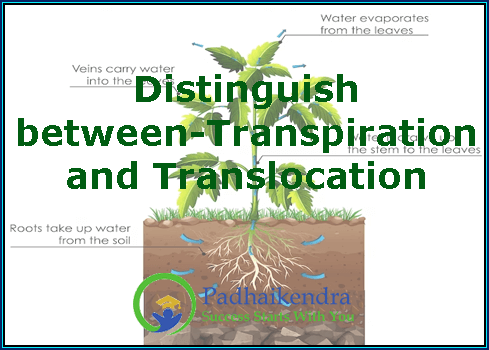Transpiration and translocation are two different processes that occur in plants.
Transpiration refers to the loss of water in the form of vapor from the aerial parts of the plant, mainly leaves, through stomata. It is a passive process driven by the gradient of water vapor concentration between the inside and outside of the leaf. Transpiration helps in the uptake of minerals and nutrients from the soil and also cools the plant by dissipating excess heat.
Translocation, on the other hand, refers to the movement of organic and inorganic substances within the plant. It occurs in the phloem, which is responsible for the transport of organic compounds such as sugars, amino acids, and hormones, from source to sink tissues. The movement in the phloem occurs in a bidirectional manner, unlike in xylem, which is unidirectional. Translocation helps in the distribution of assimilates from the photosynthetic organs to the non-photosynthetic tissues, such as roots, stem, and flowers.
In summary, transpiration is the loss of water in the form of vapor from leaves, while translocation is the movement of organic and inorganic substances within the plant through the phloem.





